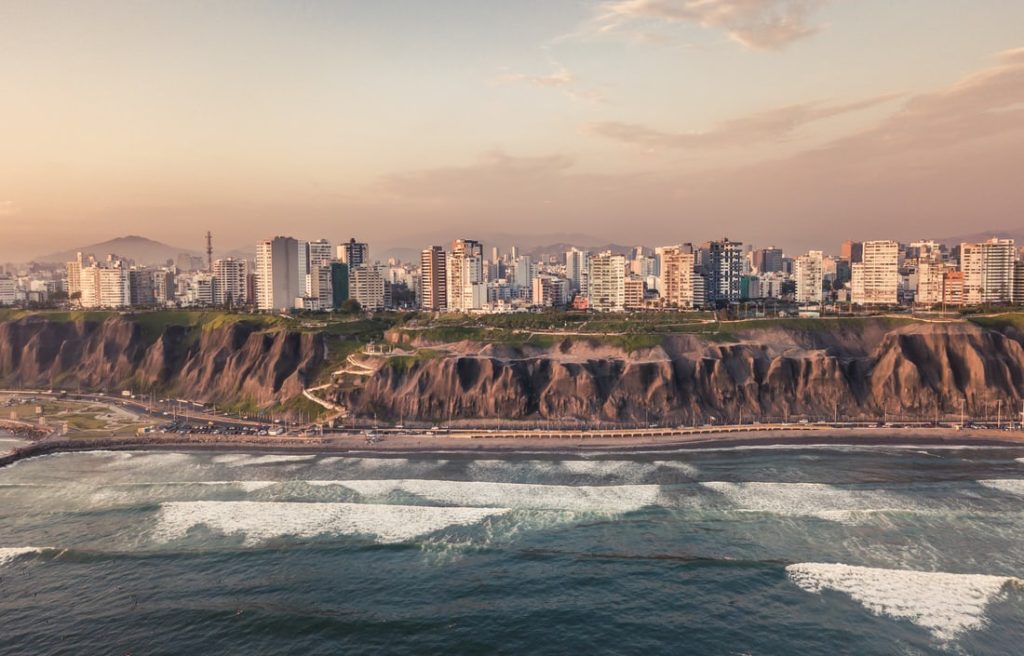The History Of The Costa Verde And The City That Conquered Its Sea
A little history of La Costa Verde Lima, which is known to many locals as el Circuito de Playas was the most ambitious project undertaken in Lima Peru in the twentieth century. The conquest of its sea was an epic battle which created a circuit of beaches that won the Pacific meter by meter. Such a feat was achieved with the tenacity of one man. A man who dreamed of a place that had nothing to envy of the French Riviera. What have we done with his legacy? I however don’t believe he thought about the risks involved in such and ambitious plan. Unfortunately, until recently Peru hasn’t taken the risks seriously.
Generational Gap

With the speed which we tend to take important things for granted. At least two generations of Limenos have assumed the Costa Verde was always there. Going down to the ocean and socializing on the costa verde in Chorrillos is a simple process today. So simple in fact, we hardly pay attention anymore. Worse, “going along the Costa Verde” has become synonymous with using a freeway if you drive.
Needless to say, things were not like that a half century ago. At age 89, historian María Delfina Álvarez Calderón has a vivid memory of “when there was no beach”.
Back then The Costa Verde in Peru, she says, was like the San Miguel area towards La Punta: a raging sea where violent waves broke at the foot of the cliff.
She goes on to say “If Limenos wanted to enjoy the summer back then, they had to go to Callao, La Punta or Cantolao, where there were spas. Or they went to La Herradura in Chorrillos, which was a beautiful beach for swimming and walking,”
A Little History Of The Costa Verde And Who Built It
Although there was a story during the government of José Pardo. According to Álvarez CalderónIt, it was President Augusto B. Leguía who had the will to build the road. The Costa Verde now connects La Punta with Chorrillos to the south and the area of La Chira that leds to the Pan-American Highway.
The inauguration in 1928 saw the first section of the Costanera Avenue finished endimg at Avenida Brazil. “That boardwalk had a very wide sidewalk. I would find myself there with a bunch of friends, we’d walk and talk until dark. Everything was so beautiful. I am 89 now, so this is not just a story, I lived it ”, adds the Master in History.
After Leguía the coastal route project was discarded for decades by successive governments. Until a young architect and engineer arrived to sell Lima the vision that you could build beaches, roads and descents and even hotels where only stones, water and steep cliffs existed.
His name was Ernesto Aramburú Menchaca (Lima, 1920-2010) and from his early days in Government until his subsequent election as mayor of Miraflores in 1970, he promoted the idea that in Lima revolutionary changes should be undertaken for the management of the city.
He did this with long-term projects like the Expressway of the Paseo de la República, and ‘la Costa Verde’. The idea of afforesting the wall of the abyss with plants from a nursery that he managed.
How They Did It
Gaining meters on sea was not easy. The Boza family tried during the Leguía Government and lost fortunes. They placed containment levees in the area of La Perla in an effort to stop the fury of the Pacific, unfortunately they were unsuccessful. With better technology and studies, Aramburú’s work paid off. They placed breakwaters in the Ocean which contributed to the taming of the waves and promoted the “sandblasting” of the coast.
The vast amounts of land clearing extracted daily from the excavation of the Vía Expresa later helped to have the beaches and the road we know today. Thus places like Makaha, Redondo or La Pampilla (in Miraflores); and Las Sombrillas, Los Yuyos, Los Pavos, Barranquito or Las Cascadas (in Barranco), to name a few were born. Today La Costa Verde in Peru connects with Chorrillos and most notably with Lima’s most popular beach, Agua Dulce.

Today surfers are an inseparable part of the landscape of the Lima coast. They’re among the people who have defended the integrity of the Aramburú project. They did so when they fought to achieve a unique law in the world to protect wave breakers, a historic milestone.
Ernesto Aramburú’s dream was that Lima did not live with its back to the sea, as it did for centuries. This was partially achieved. However many of his ideas were left unfinished and run the risk of going back to what they once were in the face of neglect. If the La Costa Verde in Peru makes news today it is only due to problems arising from its management.
Costa Verde Beach Lima Peru
Technically speaking, there is no such thing. as noted above there are beaches along the Costa Verde. There’s so much confusion even among the general population as well. Many perople refer to La Costanera here in lima as the costa verde. When in reality, they’re two separate roads. The Costanera runs along the upper portion which is full of local traffic and acts as a boardwalk, while running through Callao, San Miguel and a few other districts. The other runs along the actual coast and the lima beaches, hence the name Circuito de Playas.
Transportation Along The Costa Verde In Lima
Today you’ll find all sorts of vehicles taking advantage of the freeway type design. Entering the Costa Verde from any of the entrance ramps is a sight to behold day or night. And Tourist as well as locals want to see this modern wonder, it’s not hard to imagine why.
For safety this road now has restrictions put in place. Trucks and buses over a certain weight are not allowed and motorcycles are prohibited, however the latter ignores the law. You find plenty of Taxis using this road to beat the city traffic leaving the airport.


